Related Research Articles

The Great Train Robbery is a 1903 American silent film made by Edwin S. Porter for the Edison Manufacturing Company. It follows a gang of outlaws who hold up and rob a steam train at a station in the American West, flee across mountainous terrain, and are finally defeated by a posse of locals. The short film draws on many sources, including a robust existing tradition of Western films, recent European innovations in film technique, the play of the same name by Scott Marble, the popularity of train-themed films, and possibly real-life incidents involving outlaws such as Butch Cassidy.
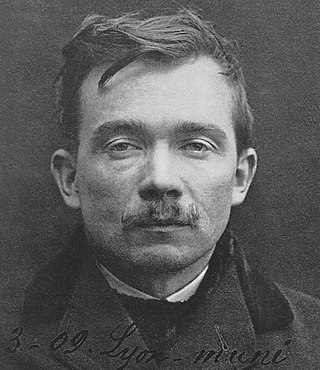
Jules Joseph Bonnot was a French soldier, anarchist, bank robber, and murderer. He is notorious for his role in the French anarchist band "The Bonnot Gang" that committed many crimes in early 20th century Paris, France.
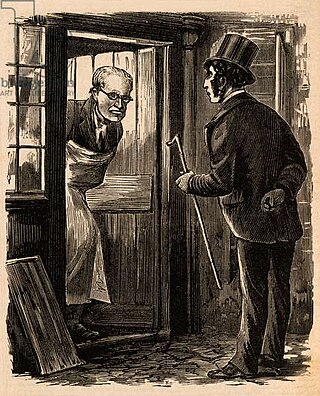
Charles Peace was an English burglar and murderer, who embarked on a life of crime after being maimed in an industrial accident as a boy.

The siege of Sidney Street of January 1911, also known as the Battle of Stepney, was a gunfight in the East End of London between a combined police and army force and two Latvian revolutionaries. The siege was the culmination of a series of events that began in December 1910, with an attempted jewellery robbery at Houndsditch in the City of London by a gang of Latvian immigrants which resulted in the murder of three policemen, the wounding of two others, and the death of George Gardstein, a key member of the Latvian gang.
The Dutch Mob was a New York pickpocket gang during the late nineteenth century.

The First Great Train Robbery is a 1978 British heist comedy film directed by Michael Crichton, who also wrote the screenplay based on his 1975 novel The Great Train Robbery. The film stars Sean Connery, Donald Sutherland and Lesley-Anne Down.

Edward James Adams was a notorious American criminal and spree killer in the Midwest. He murdered seven people—including three policemen—over a period of around 14 months, and wounded at least a dozen others. At age 34, Adams was surrounded and then killed by police in Wichita, Kansas.
The Staten Island Ninja, also known as the ninja burglar or ninja bandit, is a burglar who broke into homes in the Staten Island borough of New York City and stole from them while dressed as a ninja. He may have hit about nineteen homes since June 2007. He has been described by investigators as a white male, dressed in black and what appears to be a ski mask. He is reported to be between 5 feet 8 inches and 6 feet tall, and weighs roughly 180 pounds. He primarily works at night on Wednesdays, although he has hit during the day and on every other day of the week as well. His target is mainly wealthier homes on Staten Island, particularly in the more affluent neighborhood of Todt Hill.

The Burglar is a 1957 American crime thriller film noir released by Columbia Pictures, based on the 1953 novel of the same name by David Goodis. The picture stars Dan Duryea in the title role and Jayne Mansfield. The movie was the first feature film directed by Paul Wendkos. John Facenda, a well-known Philadelphia sportscaster, is featured as a news anchor in one scene. Much of the film was shot on location in Philadelphia and Atlantic City.
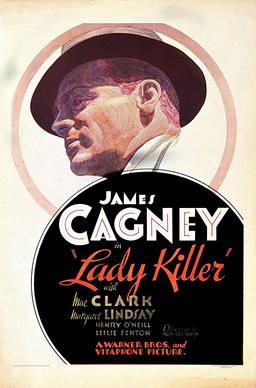
Lady Killer is a 1933 American pre-Code crime drama film starring James Cagney, Mae Clarke, and Margaret Lindsay, based on the story "The Finger Man" by Rosalind Keating Shaffer. The picture was directed by Roy Del Ruth.
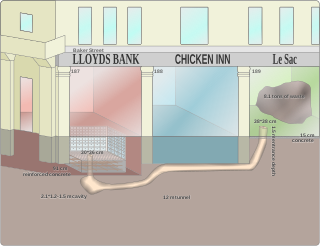
The Baker Street robbery was the burglary of safety deposit boxes at the Baker Street branch of Lloyds Bank in London, on the night of 11 September 1971. A gang tunnelled 40 feet (12 m) from a rented shop two doors away to come up through the floor of the vault. The value of the property stolen is unknown, but is likely to have been between £1.25 million and £3 million; only £231,000 was recovered by the police.
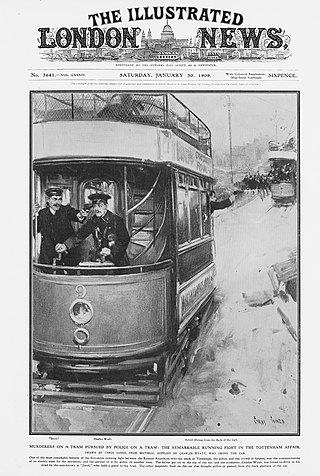
The Tottenham Outrage of 23 January 1909 was an armed robbery in Tottenham, North London, that resulted in a two-hour chase between the police and armed criminals over a distance of six miles (10 km), with an estimated 400 rounds of ammunition fired by the thieves. The robbery, of workers' wages from the Schnurmann rubber factory, was carried out by Paul Helfeld and Jacob Lepidus, Jewish Latvian immigrants. Of the twenty-three casualties, two were fatal and several others serious, among them seven policemen. The two thieves killed themselves at the end of the pursuit.

Eyewitness is a 1970 British thriller film directed by John Hough and starring Mark Lester, Susan George and Lionel Jeffries. Its plot follows a young English boy who, while staying with his grandfather and adult sister in Malta, witnesses a political assassination, and is subsequently pursued by the killers—however, due to his habitual lying, those around him are hesitant to believe his claims. It is an adaptation of the novel by Mark Hebden, the pen name for John Harris, and bears similarity to Cornell Woolrich's novelette "The Boy Cried Murder", originally adapted for film as The Window.
The Kimes–Terrill Gang was a prohibition era bank robbing gang, led by Matthew Kimes and Ray Terrill, active in the Midwestern United States during the 1920s. The gang was known, not only for their high-profile robberies, but for their frequent escapes from prison. The members were alleged to have sworn a blood oath to free each other from jail, should they ever be captured, or die in the attempt.

Desperate Poaching Affray is a 1903 British chase film by Wales-based film producer William Haggar. Three minutes long, the film is recognised as an early influence on narrative drama in American film, especially in the chase genre. The film used a number of innovative techniques including on-location shooting, panning shots, and unconventional use of screen edges. The film, along with Frank Mottershaw's film A Daring Daylight Burglary, is considered to have helped launch the chase subgenre and influenced Edwin S. Porter's The Great Train Robbery.
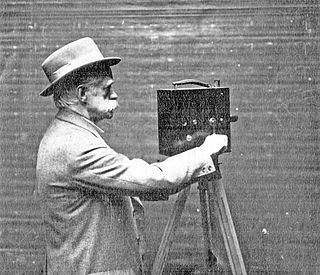
Frank Mottershaw (1850–1932) was an early English cinema director based in Sheffield, Yorkshire. His films, A Daring Daylight Burglary and The Robbery of the Mail Coach, made in April and September 1903, are regarded as highly influential on the development of Edwin Porter’s paradigmatic "chase film" The Great Train Robbery of December 1903, and often claimed as the prototype of the action film. The uniqueness of Mottershaw's A Daring Daylight Burglary is seen in the way it tracks a single action through changing locations. Henry Jasper Redfern and Mottershaw made the first motion pictures filmed outdoors in Sheffield.

The Barker–Karpis Gang was one of the longest-lived criminal gangs during the Depression Era, spanning from 1931 to 1935. The gang was founded by Fred Barker and Alvin Karpis, and later joined by Fred's brother Arthur "Doc" Barker. Along with the three core members, the gang's network spanned up to 25 members at one point.
The Bold Bank Robbery is a 1904 short crime film produced and distributed by the Lubin Manufacturing Company. The silent film depicts a group of burglars who plan and execute a successful bank heist. Company employee Jack Frawley was the film's director, also coming up with the story and serving as cinematographer; the cast's identities are unknown. The silent film was the first Lubin Manufacturing Company release to feature an original narrative.

The Amazing Mr. Williams is a 1939 American screwball comedy film produced by Everett Riskin for Columbia Pictures and directed by Alexander Hall. The film stars Melvyn Douglas, Joan Blondell and Clarence Kolb. It was written by Dwight Taylor, Sy Bartlett and Richard Maibaum. The film is about a police lieutenant who is too busy solving crimes to marry his longtime fiancée, who decides to take action and get him to marry her and settle down. The film was released on November 22, 1939.

In April 2015, an underground safe deposit facility in Hatton Garden, London, owned by Hatton Garden Safe Deposit Ltd., was burgled.
References
- ↑ Brooke, Michael. "Daring Daylight Burglary, A (1903)". Screenonline . British Film Institute . Retrieved 18 November 2013.
- ↑ Leslie Wood (1947). The Miracle of the Movies. London: Burke Publishing. pp. 144.
- ↑ It was preceded by the British short Kidnapping by Indians (1899) by several years.
- ↑ Jess-Cooke, Carolyn (2009). Film Sequels: Theory and Practice from Hollywood to Bollywood. Oxford University Press. p. 1939. ISBN 978-0-748-68947-7.